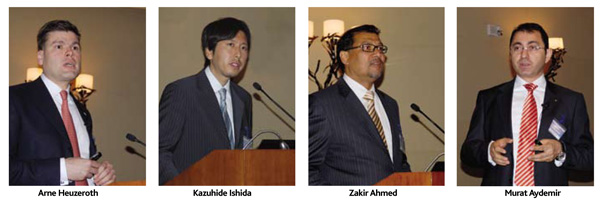With ‘assisted’ being the operative word, solar seminar attempts to find a way out to reconcile footprint needs with the urgent demand for alternative solutions in the realm of cooling, keeping in mind the urgent need to reduce the carbon emissions.
With ‘assisted’ being the operative word, solar seminar attempts to find a way out to reconcile footprint needs with the urgent demand for alternative solutions in the realm of cooling, keeping in mind the urgent need to reduce the carbon emissions.
Solar-assisted cooling was in the spotlight during a May 24 seminar in Dubai by Yazaki, Viessmann and Nia. The seminar was conducted in association with Climate Control Middle East.
In a nutshell, solar-assisted cooling provides the ability to reduce the electrical consumption of existing compression cooling systems, which lead to a reduction in carbon footprint.
Solar-assisted cooling systems use solar-driven absorption chillers, which aid electrical compression cooling systems. The chilled water provided by hot water-driven absorption chillers, aid in pre-cooling the chilled water cycle of the compression chiller. The pre-cooling reduces the delta T of the electrical chiller, which leads to a reduction in the overall electrical consumption of the system.
 In the UAE, Nia has made forays in solar-assisted cooling. Zakir Ahmed, the Managing Director of the company, elaborated on how the company had executed a 5 TR solar-assisted cooling pilot project in 2008 at Masdar City, which he added, was a success.
In the UAE, Nia has made forays in solar-assisted cooling. Zakir Ahmed, the Managing Director of the company, elaborated on how the company had executed a 5 TR solar-assisted cooling pilot project in 2008 at Masdar City, which he added, was a success.
Further to Ahmed’s presentation, Murat Aydemir, the Managing Director of Viessmann Group, gave an overview of solar energy and elaborated on solar thermal technology for process and cooling applications. He also spoke on design guidelines for solar thermal systems.
Speaking on the global sentiment on solar energy, Aydemir said that Europe had set itself a goal for 2020 to reduce carbon emissions by 20-30%. A key strategy to achieve the goal, he added, was to rely on energy efficiency and to substitute fossil fuels with renewable energy.
Speaking on the efficacy of solar energy, Aydemir added that four hours of sunlight were enough to cover human consumption. Referring particularly to the UAE, Aydemir said that the country could realise 2,027 kwH/m2 of annual energy amount, despite the prevalent dust and humidity, which were factors for diffused light. To put things in perspective, he said that a litre of gasoline could produce only 10Kw, whereas solar in the UAE context could stretch numbers much further.
Following Aydemir’s presentation, Arne Heuzeroth, the Head of Business Unit at Yazaki Europe Limited (Environment and Energy Equipment Operations), spoke on the company and also its absorption products. He further spoke on Yazaki’s Aroace applications.
Heuzeroth’s colleague, Kazuhide Ishida, then spoke on solar-assisted cooling (SAC) at length. Ishida, who is the Product Development Engineer at Yazaki Europe Limited, spoke on GCC trends: carbon emissions and electricity consumption. He also discussed on absorption chiller technology. The highlight of his presentation was his elaboration on solar cooling benchmark and functional principle. To bolster his presentation, Ishida presented case studies of the Hamamatsu Press Tower, in Japan, and the UEFA Headquarter, in Nyon, Switzerland.

Copyright © 2006-2025 - CPI Industry. All rights reserved.